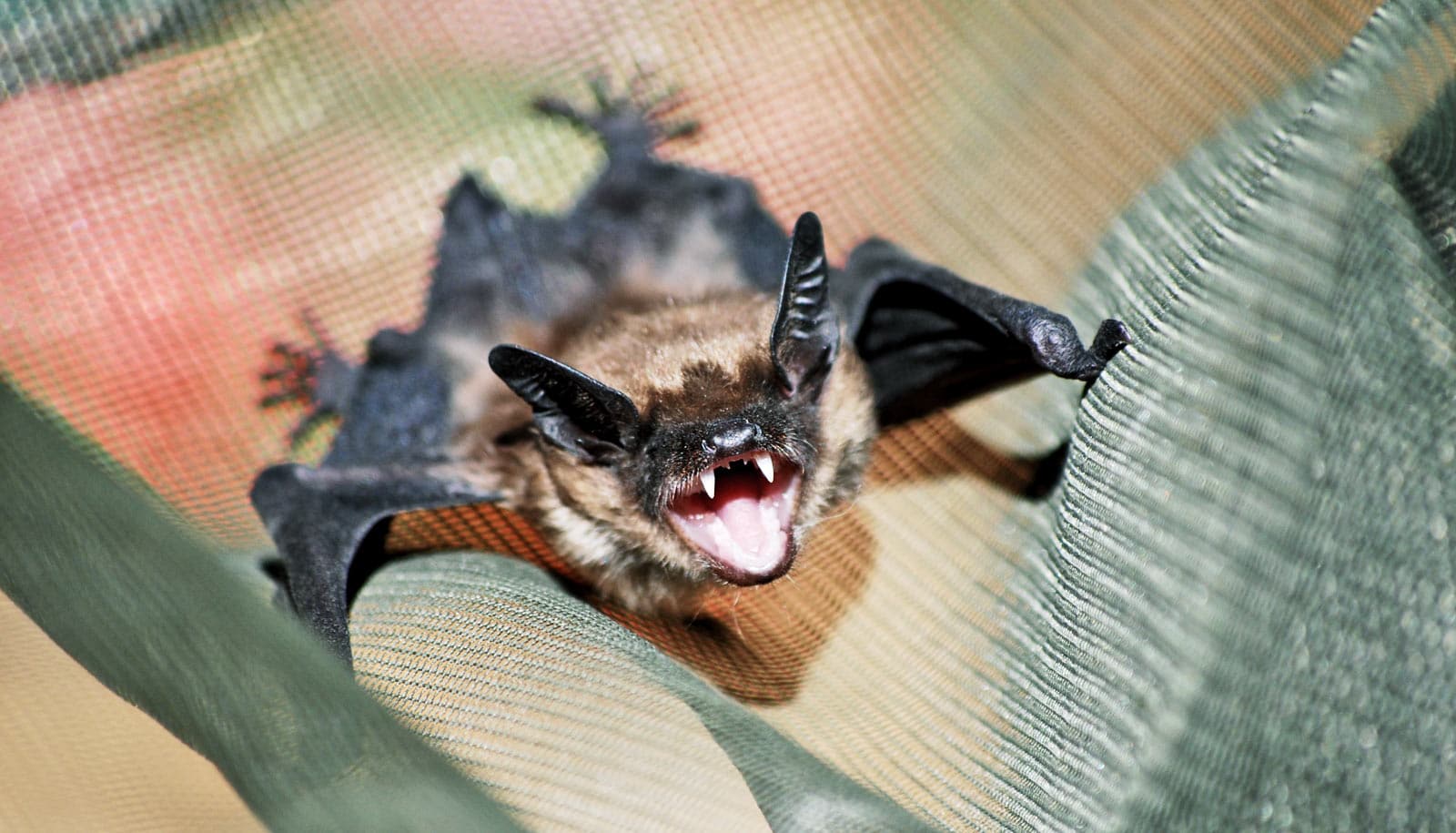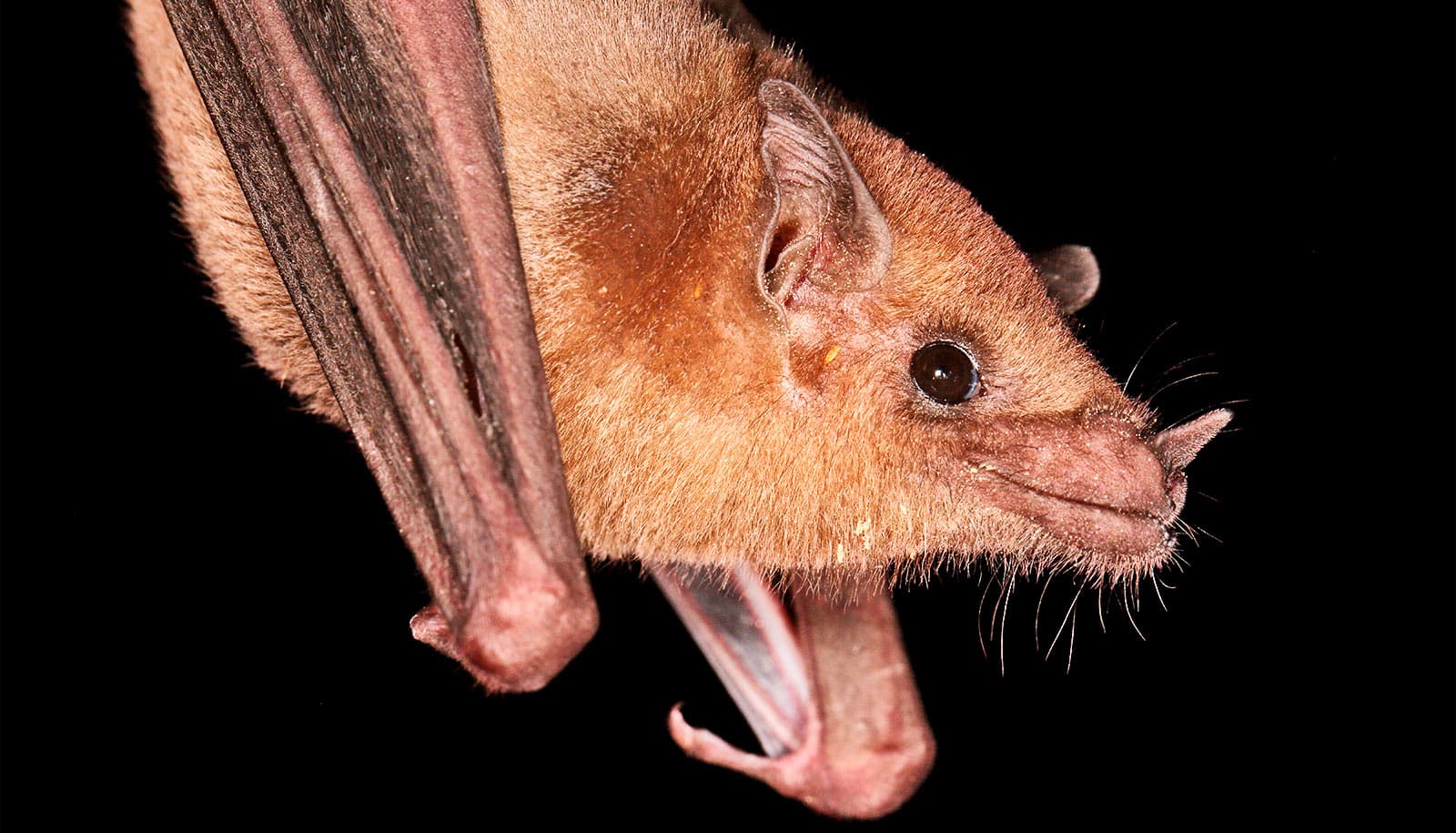Bats can raise their voices really quickly when background noise threatens to drown out the echoing chirps they use to locate their prey.
From ear to brain to louder vocalization, it takes them just 30 milliseconds to amp up their own volume in response to sounds around them. That’s just a tenth of the time it takes a human to blink an eye and is the fastest audio-vocal response ever detected.
It happens so fast, in fact, that scientists say raising the voice to overcome background noise–a response known as the Lombard effect–must be a fundamental temporal reflex rather than, as previously thought, a deeper cognitive behavior that would take more brain processing time.
The finding, published in the Proceedings of the National Academy of Sciences, helps reveal how many species, including humans, share the ability to be heard over distracting ambient sounds.
“Scientists have been wondering for a century: Could there be a common auditory process to explain how this phenomenon happens in [everything from] fish to frogs to birds to humans, species with wildly different hearing systems?” says coauthor Ninad Kothari, a graduate student in psychological and brain sciences at Johns Hopkins University. “We resolved this question.”
The new information may lead to better understanding of and treatment for diseases, such as Parkinson’s, where the Lombard effect may be amplified, researchers say. It could also help point the way to assistive medical devices.
Bats rely on sonar-like echolocation—emitting sounds and listening for echoes—to detect, track, and catch their prey. Unlike humans, whose vocalizations are comparatively long and slow, bats are ideal for such a sensorimotor study. Their high-frequency chirps, undetectable to the human ear, are quick and precise.
Researchers trained big brown bats to remain perched on a platform and track insects moving towards them on a tether. While a bat hunted an insect, the researchers recorded the bat’s vocalizations with an array of 14 microphones. Sometimes the researchers allowed the bat to hunt in a silent environment; other times, they played bursts of interfering white noise, at varying intensities, from a speaker positioned in front of the bat.
The white noise interfered with the bat’s echolocation and caused it to emit louder and louder chirps, not unlike someone trying to be heard, first over a loud radio, then over a lawn mower, and then over the siren’s blare from a passing fire engine. When the noise stopped, the bat would stop shouting, so to speak, and vocalize at a more typical level.
See how bats trade senses to hunt a robot frog
The researchers were able to create a computational model for the Lombard effect that applies to all vertebrates. They concluded that the brain of a bat, or a person, or a fish, constantly monitors background noise and adjusts the vocal level as necessary.
“…the speed at which an echolocating bat responds to ambient noise is truly shocking: 10 times faster than we blink our eyes.”
First the auditory system detects background noise. The auditory system then measures the sound pressure level and adjusts the vocalization amplitude to compensate. When the background noise ends, the sound pressure level dissipates, and so does the level of vocalization.
This entire elaborate process happens in just 30 milliseconds. Even in terms of near-instantaneous brain reactions, they call this reflex “remarkably short.”
“Typically, we breathe every three to five seconds, our heart beats once per second, and eye blinking takes one third of a second. If we believe that eye blinking is fast, the speed at which an echolocating bat responds to ambient noise is truly shocking: 10 times faster than we blink our eyes,” says lead author Jinhong Luo, postdoctoral fellow at Johns Hopkins.
Bats’ cute head-tilting helps them hunt
Scientists had believed the Lombard effect was much slower: about 150 milliseconds for birds and bats and approximately150 to 175 milliseconds for humans.
The National Science Foundation, the Human Frontiers Science Program, the Office of Naval Research, and the Air Force Office of Scientific Research funded the work.
Source: Johns Hopkins University



